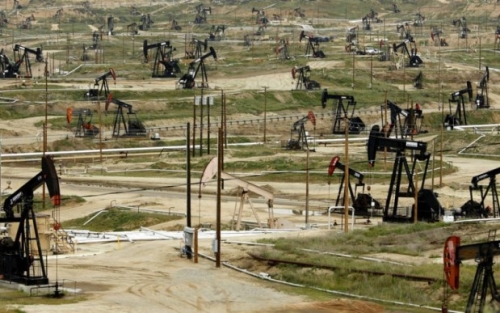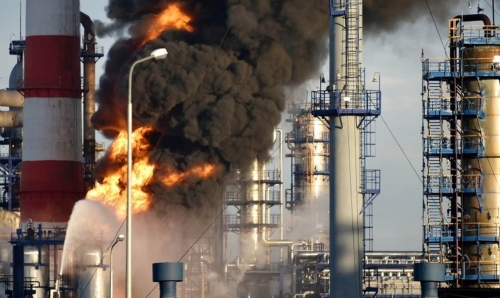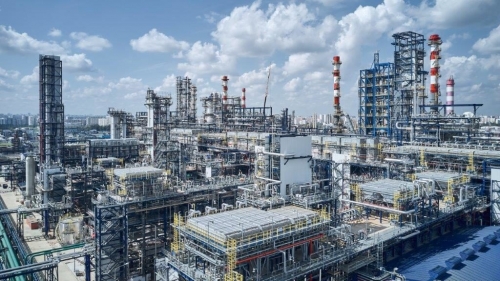After a week of volatility, oil prices settled higher, as trade tensions between top oil consumers China and the United States showed signs of easing. In gas, price movement was mixed, initially slipping and then climbing due to a drop in production and forecasts for increased demand following the resumption of the Freeport LNG export plant in Texas.
BKR Rig Count | The total active drilling rigs in the United States decreased by 6 last week, to 578.Oil rigs dropped by 5 to 474, and gas rigs remained flat at 101. Rig count in the Permian Basin dropped by 2 to 285 | May 9 | BKR NAM Rig Count
US Crude Inventories, excluding those in the Strategic Petroleum Reserve (SPR), decreased by 2 MMbbl to 438.4 MMbbl (about 7% below the 5y average for this time of year). On the products side, gasoline increased by .2 MMbbl (3% below the 5y average). Distillate fuels decreased by 1.1 MMbbl (13% below the 5y average). Total commercial petroleum inventories increased by 1.2 MMbbl | May 2 | EIA Weekly Report
Iran has agreed to hold a fourth round of nuclear talks with the United States on Sunday in Oman, Foreign Minister Abbas Araqchi said on Friday. "The delegations require more time to examine the issues that are raised. But what is important is that we are on a forward-moving path and gradually entering into the details." | May 9 | Reuters
Looking ahead
Saudi Arabia raised prices for its crude oil for buyers in Asia next month despite OPEC+ announcing another larger-than-expected jump in production for June. Saudi Aramco increased the price of all of its crude for its biggest buyers in Asia by 20 cents a barrel for June, vs an expected 30c/bbl increase. It lowered prices for other regions, including Europe and the US | May 5 | Blomberg
Kazakhstan has no plans to cut oil output in May, the country’s Energy Ministry said. According to the OPEC+ agreement, Kazakhstan should pump just under 1.4 million barrels a day of crude this month. The nation’s planned production for May, including condensate that isn’t counted in OPEC+ limits, will be about 2 millions barrel a day | May 8 | Bloomberg
Chinese firms are purchasing liquefied natural gas shipments from the spot market, a reversal of months of relative inactivity from the world’s top buyer, after prices slumped to the lowest level in about a year. At least two shipments were procured last week at the $10 per million British thermal units level. The move is a u-turn for Chinese LNG buyers, which had reduced imports and resold shipments because expensive gas was not attractive to a weaker domestic market. Consistent purchases by China and others may help slow the recent decline in Asian and European gas prices | May 5 | Bloomberg
Gas prices rose after the European Union unveiled a roadmap to finally switch off the remaining flows of Russian gas, nuclear fuel and oil. The European Commission, the bloc’s executive branch, gave its strongest signal yet that it’s serious about ending five decades of reliance on Russian energy, the plan seeing EU companies terminate all their contracts with Russian gas suppliers by the end of 2027 | May 6 | Bloomberg
Republicans in the US House are more likely than not to kill a consumer tax credit for electric vehicles, according to Speaker Mike Johnson. “I think there is a better chance we kill it than save it,” Johnson said in an interview. “But we’ll see how it comes out.” Eliminating the popular tax credit of as much as $7,500 for consumers who purchase an EV has been a prime target for Republicans looking for ways to help pay for President Donald Trump’s massive tax-cut package | May 6 | Bloomberg
Indonesia will cut its fuel imports from Singapore and source supplies from the US and Middle Eastern countries instead, according to the country’s energy minister. “It is not only a matter of price but also geopolitical issues, we need to have a balance with other countries,” Lahadalia said, adding that imports from Singapore would be reduced to zero “some day” | May 9 | Bloomberg
Oil proceeds in Russia’s state budget fell last month as global crude prices retreated. Oil-related taxes dropped by 6.5% from a year earlier to 984.8 billion rubles ($12.2 billion), according to Bloomberg calculations based on Finance Ministry data published Wednesday. Combined oil and gas revenue totaled 1.09 trillion rubles, down almost 12% | May 7 | Bloomberg

%20(1).png)



